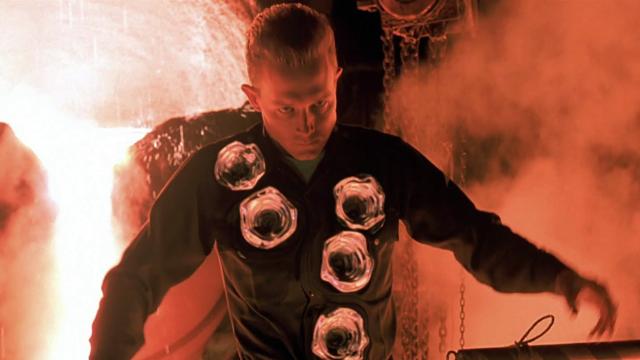“We have created a functionality in liquid metal that even James Cameron wasn’t able to conceive: how to make it move like a beating heart.”
Australian Scientists are beautiful and terrifying.
In a breakthrough discovery, University of Wollongon researchers have created a “heartbeat” effect in liquid metal, causing the metal to pulse rhythmically – just like a beating heart. The researchers made the heartbeat by electrochemically stimulating a drop of liquid gallium, making it oscillate “in a regular and predictable manner”.
Gallium (Ga) is a soft silvery metal with a low melting point, turning to liquid at temperatures over 29.7C.
The discovery could be used for fluid-based timers and actuators in artificial muscles, soft robotics and “lab-on-a-chip” microfluidic circuitry.
Professor Xiaolin Wang, a node leader and theme leader at the ARC Centre of Excellence for Future Low Energy Electronics Technologies (FLEET), led the research team from UOW’s Institute for Superconducting and Electronic Materials at the Australian Institute for Innovative Materials.
“By designing a special electrode and applying voltage to drops of liquid metal we were able to make the metal move like a beating heart,” Professor Wang said.
While similar heartbeat effects have been created before in liquid mercury, it ends up with an erratic motion that is hard to stop, or control. Oh, and mercury has the added disadvantage of being highly toxic.
Liquid gallium, on the other hand, is non-toxic and produces a regular motion (at frequencies ranging from 30-100 beats-per-minute depending on the influence of gravity and on the size of drop) – making it way more useful.
Professor Wang said his research in liquid metals was inspired by both biological systems and science fiction. Yes, that is including the shape-shifting, liquid metal T-1000 robot in the James Cameron-directed film Terminator 2: Judgement Day.
“To me, nothing is fiction – science fiction is a science fact that hasn’t been discovered yet. When I see an effect in science fiction I think about how we can create that functionality in real life,” he said.
let’s talk about T-1000 a little.
The liquid robot from Terminator 2 had two functionalities. One was to change its shape and then recover it. The second was to change from a softer to a harder state. Remember the scene where it extended its arm out and turned it into a sword, where it turned from a soft metal to a hard one? Like that.
You might not know this, but those two functionalities have been discovered already. A group in China and another group in the United States discovered the first (changing shape and then recovering it) and it was this same research group at UOW that discovered the second phenomena (transition from a soft state to a hard state) by applying a voltage.
They also worked out a way to form any patterns instantly – including writing – on liquid metal without even touching it. The initial idea was to find a way to reproduce a “crop circle” effect in the lab.
“And now we have created a functionality in liquid metal that even James Cameron wasn’t able to conceive”
While the research paper focuses on the fundamental physics of the breakthrough – understanding how and why the liquid gallium behaves in the way it does – rather than its applications, Professor Wang said there were a number of potential uses.
“Soft robotics is our future. To develop soft robots we need a power to drive the soft tissue to move, so very naturally we think about a soft heart for a soft robot,” he explains. “In many biological systems, in humans and animals, it is the heart that powers everything. So a metal heartbeat could be used as a pump, as the driving force to transport liquid through a channel.”
Dr David Cortie, an ISEM research fellow and one of the paper’s co-authors, said the self-regulating nature of the liquid gallium heartbeat made it a good candidate for a number of uses.
“The timing of the heartbeat occurs naturally, you don’t have to apply any complicated electronics to get the timing to work, therefore self-regulated pumping is one possibility,” Dr Cortie said.
“Something else we proposed was oscillators. In electronics you often need a timing control, for example something that sends a pulse two times per second, so by analogy, this functionality could be useful for fluid-based timers in microfluidic circuitry.”
The Australian Research Council supported the research through an ARC Future Fellowship Project and an ARC Discovery Project.
